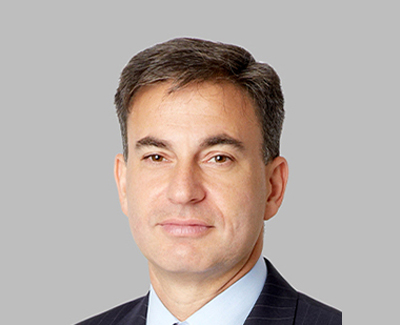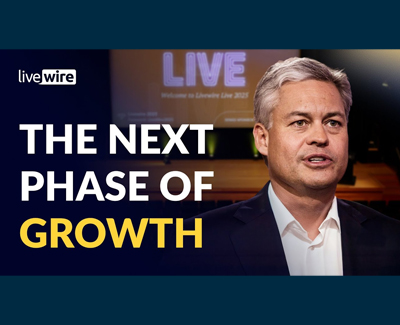How the “higher for longer” world influences where this investor puts cash to work
The following was produced and published as part of Livewire’s The Pitch on 19 June 2024.
With spreads so tight and rates so high, where is the best place to make your cash work for you?
Interest rate markets have been extremely volatile – with the number of cuts priced into the US Federal Reserve’s tool reduced from 6 to 1 in the space of just four months. Meanwhile, benchmark investment grade (highest quality) credit spreads in the U.S. and Europe are at their tightest levels in two years – suggesting investors in this asset class are willing to pay up (at historic highs in some cases) for that yield. It also suggests that investors are no longer pricing a deep recession.
But should investors be more worried than the pricing suggests?
In this edition of The Pitch, Ares Investment Management’s Teiki Benveniste shares his views on the “higher for longer” world he believes we are now in, why he thinks spreads are so tight in some markets, and what it all means for where Ares is finding opportunities in the global credit markets.
EDITED TRANSCRIPT
What is your base case for interest rates in the U.S. and what do you make of the unwind in rate cut expectations we have seen of late?
Benveniste: The least we can say is that it’s been volatile. There’s been a lot of ups and downs in the rates markets, and we’re in the camp that it’s going to remain the case for the foreseeable future. You’ve mentioned higher for longer. We do believe that there’s a potential for an environment of higher rates for longer. What it means is the Fed and central banks across the world have to combat high inflation and economies that are doing probably better than expected.
Now, it’s really important for me to say that we are credit managers, so our focus is really on managing credit, and not so much making significant bets on duration or where interest rates are going, especially in our multi-asset credit strategy and diversified credit strategies.
Our focus here is to manage credit risk and then look across the asset classes that we can invest into and find the best relative value.
What this means is if you think about the end of last year, the market was pricing in six rate cuts for 2024. The way it impacted our portfolios was that we were very cautious with fixed-rate credit instruments because we felt that the risk of those instruments experiencing volatility was high compared to the floating rate instruments which were providing us with a lot of current income. We have tended to keep our strategies anchored in floating rate instruments, that are high up in the capital structure, and senior secured.
Earlier this year, credit spreads tightened to 2-year lows in the US and Europe. In plain English – what does this mean and why does it matter to investors?
Benveniste: First of all, let’s explain credit spreads and let’s not assume that everyone knows what credit spreads mean. Credit spreads are effectively the part of the return that you get paid for taking credit risk. If you think about a credit instrument, you’re going to get a yield from it, and that yield can be split between the risk-free rate and the credit margin. The credit margin is your risk premium for taking credit risk.
If you see credit spreads tightening, what it generally means is that the market feels good about the environment, feels that there’s less risk around and they’re ready to accept a smaller risk premium for taking on credit risk. The opposite is true as well, if fear starts to come through the market you see credit spreads widen.
What’s very interesting is that we often hear people say that credit spreads are very tight. However, we always have to ask the question – what parts of the credit market are you looking at? It’s a $6.2 trillion opportunity set (1) and you’re going to have very different instruments that are trading at spread levels that can look very different at the same point in time.
The overarching comment I would make is this – spreads are tighter now than they were a year ago. I would say that is a true statement across the credit market because there is less fear of a recession and the banking situation is in a better spot than a year ago.
If you look at fixed-rate corporate bonds, then they are at historical tights. If you look at high-yield U.S. bonds, you are looking at the second percentile in terms of how tight they are. That is, spreads have been wider 98% of the time.
On the other hand, if you look at floating rate instruments such as syndicated loans, they’re in the 50th percentile. So when we hear that spreads are at the tightest level in history, we always have to ask the question – which part of the credit market are you talking about?
Where are you seeing the most growth as a credit investor because of the higher for longer narrative?
Benveniste: We look at that environment, and I don’t want to give the impression that we’re completely out of fixed rates. That is not what I’m saying. What we’re trying to say here is that in this environment, floating rate, senior secured instruments are providing a nice anchor for our strategies in terms of current yield. We’re talking about senior secured instruments, so they’re quite defensive as well.
Having said that, we do find pockets of opportunity in some of the fixed-rate instruments that I’ve just talked about. The reason is when you think about those instruments, their yield has two components. The risk-free rate and the credit spread. But the risk-free rate component is fixed. So when the risk-free rate increases, the only way for this instrument to pay you the yield that the market is asking for is through the price.
What it means is that there are corporate bonds out there that are trading at, for example, 90 cents on the dollar. If they are worth $100 and if there’s no default, you’re going to get $100 at maturity and potentially even earlier, and you can buy them at 90 cents on the dollar. What we do is we look at those opportunities and find the corporates that we feel have potentially a catalyst for early repayment and add optionality to our portfolios.
But we don’t do that by increasing interest rate duration tremendously in our portfolio. We stay anchored in those floating rate, high quality, low duration instruments that just allow us to clip the coupon and then we add some accents with those fixed rate discounted bonds.


